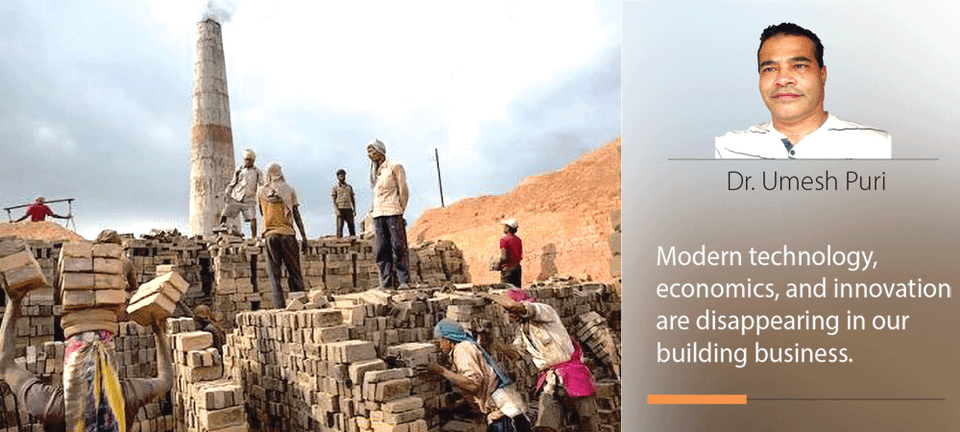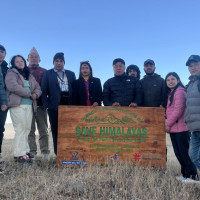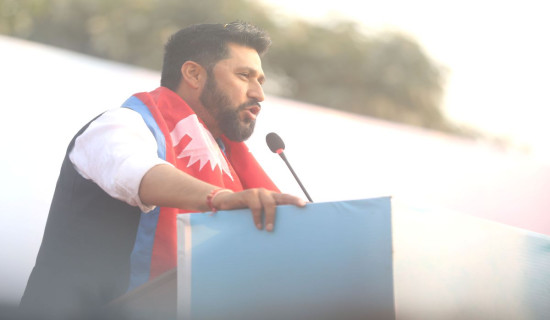- Tuesday, 20 January 2026
Nepal’s Construction Industry
Innovative Designs Encounter Roadblocks
Without a question, human hunger for science and technology, research, and invention has continued apace from the early 21st century to the present. Every nation is competing to establish its own distinct identity on the world. Some countries display breathtaking innovations in buildings, while others in bridges.
Strangely, nations are simultaneously rushing to use cutting-edge technology to build dams, tunnels, subterranean constructions, etc. Countries all over the world are fiercely vying for the opportunity to dole out originality and creativity in design and building, from reaching up higher in the sky to delving below in the subterranean.
The Kingdom Tower, which is now being built in Saudi Arabia, will soon surpass the Burj Khalifa in Dubai, United Arab Emirates (UAE), which is currently the highest building in the world. It has the audacity to stand straight in the open sky up to one kilometre in height. It is a cutting-edge structure that embodies the height of engineering prowess. By 170 metres, the Kingdom Tower will surpass the Burj Khalifa. Yet, the narrative doesn't end here.
For the UAE to miss the chance to host the tallest building in the world is beyond unacceptable. Thus, the UAE intends to construct the Dubai Tower Creek, which would soar to an incredible height of 1300m. It pushes the envelope of what is feasible to construct. Surprisingly, the competition for bridges is becoming more intense. The pinnacle of the new breed of suspension bridges is the recently finished Canakkale Bridge in Turkey. In terms of bridge evolution, this one is a long way ahead. It has pushed the boundaries of engineering to new dimensions. It goes without saying that engineers from all over the world strive to outdo one another with the audacity of their inventions of astounding height, length, and beauty in all fields of construction—dams, canals, subterranean projects, skyscrapers, etc.
Recently, Nepal has made significant investments in the development of its infrastructure, however when compared to our neighbours, there is scarcely any innovation or originality in any of the structures.
Modern technology, economics, and innovation are disappearing in our building business. The goal of creating cutting-edge, futuristic infrastructure is a long way off.
To keep up with our neighbours, we must make a quantum leap. Fair question: does Nepal have the right environment for construction innovation? The short response is "No." Because they will be the ones who will be arbitrarily imprisoned first by the Commission for Investigation of Abuse of Authority (CIAA), Nepal, engineers and builders are reluctant to take any risks for innovation. Engineers, contractors, and all others are first eviscerated without any forensic investigation.
Those who want to think outside the box are severely discouraged by the CIAA's policy of "first locking up all the concerned personnel, then starting an investigation." Innovation won't happen unless someone challenges themselves intellectually or physically. Success or failure can result from trying something new. Any outcome would advance learning. Of course, those who misappropriate or mismanage a project shouldn't get off scot-free and need to face severe punishment. Nevertheless, as things stand in Nepal, the CIAA's inability to distinguish between what went wrong and the responsible party and dispense justice as a result is really a significant barrier to innovation.
Internationally, a team of investigators or experts revisits the disaster sites to conduct forensic examinations of the faulty structures, much like a detective would at a crime scene. As if it were a crime scene, the area was cordoned off, and detectives searched the debris for hints.
Engineers can use the grisly blueprint of what went wrong in a structure's collapse to learn important lessons. This implies that all newly constructed buildings will have disaster-proof designs. At its official opening in 1940, the Tacoma Narrows Bridge in Washington State, USA, was torn apart by the wind. 35 construction workers were killed in an Australian bridge collapse in 1970. A freighter wrecked the
Sunshine Skyway bridge in Florida in 1980, plunging traffic into the water, and just a few years ago, in 2007, a Minneapolis interstate bridge abruptly collapsed, killing 13. America was shocked by these events, which seriously undermined public confidence in the nation's infrastructure. Images of bridge collapses are seen all over the world and endure for a very long time. Our confidence in man-made structures is damaged by catastrophic bridge failures.
To counteract previous failures, new technologies are developed and historical errors are examined each time a similar incident occurs. Bridge builders carefully consider their understanding in order to prevent the modern marvels from succumbing to the wrongs of the past. In essence, every significant bridge completed or being built today was inspired by a disaster or the lessons it taught.
Engineers learned for the first time about the disastrous impact of wind on bridges when the Tacoma Narrows bridge collapsed. The power of the wind grows more deadly as bridges attempt to span ever-greater distances. Later, it was realised that this feat of modern engineering had failed due to inadequate attention being given to aerodynamics.
In addition to being the most well-known and significant bridge disaster in history, the Tacoma Narrows bridge collapse. All suspension and cable-stayed bridges have been designed aerodynamically with the help of wind tunnel testing since the Tacoma tragedy. In actuality, this catastrophe marks the beginning of a paradigm change in bridge design. Although no engineers were charged or put in jail for the bridge collapse, they did learn from the mishap to make improvements in the future. Now, more ambitious projects are thriving globally.
Their knowledge has spurred the idea to suggest a gigantic bridge to bridge great divides spanning immeasurable distances in ever more creative ways. They will push the boundaries of bridge construction as they connect nations and cross oceans. This is only possible when the legal system supports innovation.
Construction is more innovative, economical, safe, and of high quality when engineers are free to think creatively and demonstrate their audacity in their designs. Through research and development, they will examine a structure in relation to a wide range of potential catastrophes.
In the age of megastructures, it is no longer enough to build a structure; it has to be equally aesthetically pleasing, creative, and innovative on top of the traditional ethos of the past: quality, economy, and safety of structures. It may be impossible to design a structure that meets all of these requirements, but engineers can simulate the likely "to-be-met" scenario of a structure and design accordingly.
(Dr. Puri is an international consultant and the Director of Civil Park International Co. Ltd, a global engineering firm)

















